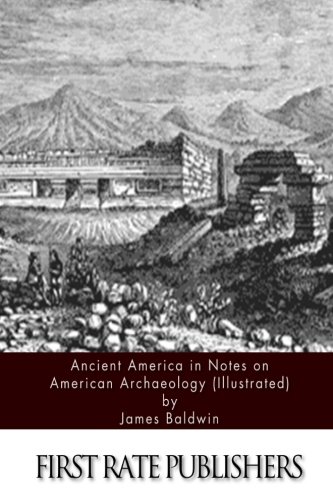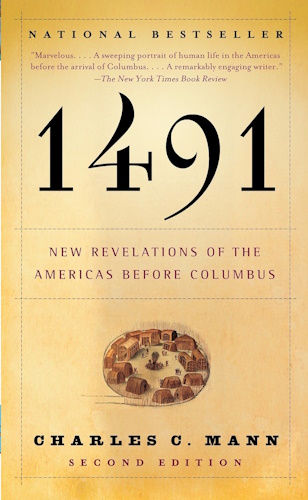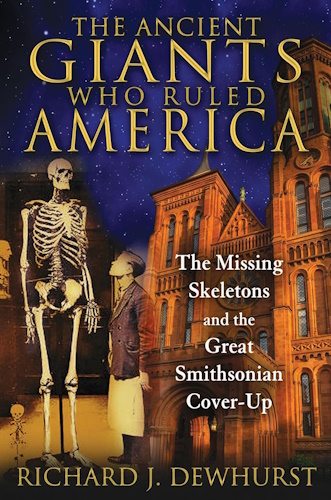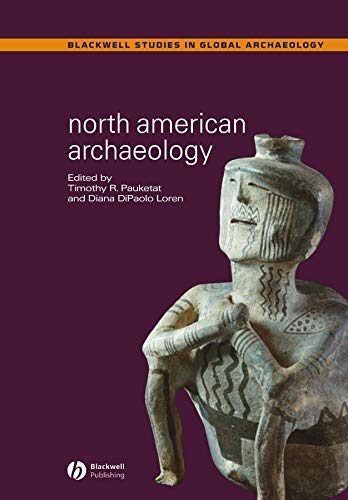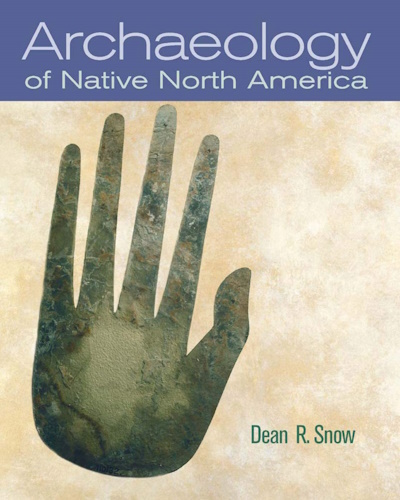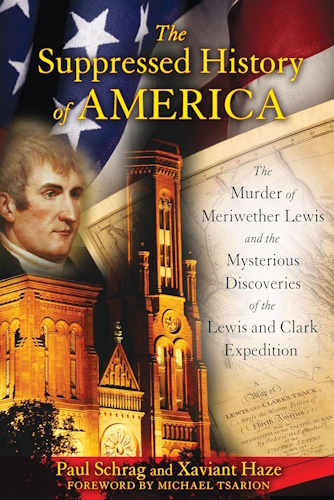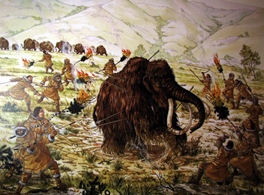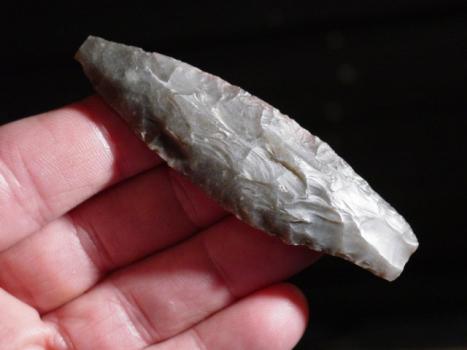![]()
Texas Artifacts May Rewrite History
by
Roy Wenzl
April 6, 2011
![]()
Discovery Of Artifacts In Texas May Rewrite Human History

Michael Waters, at the Debra L. Friedkin dig site north of Austin, Texas, that he and other archaeologists say will rewrite American history about the first people to colonize North and South America. He and his team found human artifacts in soils that can be accurately dated to about 15,500 years ago.(Courtesy of Michael Waters/Wichita Eagle/MCT)
COLLEGE STATION, Texas —Scientists along Buttermilk Creek north of Austin, Texas, have found flint knife blades, chisels and other human artifacts lying in a soil layer nearly 16,000 years old — a discovery they say will rewrite a major chapter of ancient human history.
For one thing, it is now the oldest and arguably most credible site of human occupation in North or South America; but there's more.
The discovery, by Texas A&M archaeologist Michael Waters and others, pushes back by 2,500 years the time when traditional science thought humans entered the New World from Siberia and founded the native peoples of North and South America.
"This discovery ought to be like a baseball bat to the side of the head," to past theories, Waters said.
Other ancient sites in the Americas usually produce only handfuls of artifacts, in soils with ages that scientists argue about. This site contained tools in layer after layer of soils stacked like layer cake, the youngest from modern times, the oldest layer containing 15,000 artifacts dated to 15,500 years ago.
The discovery strengthens the case for two theories that traditional archaeologists laughed at not long ago — that the first Americans came earlier than 13,000 years ago, and that they didn't walk over a land bridge into North America from Siberia, but came by skin boats at least 16,000 years ago (or long before) skirting along coastlines of the Aleutian Islands and then Alaska, Canada and America.
Waters believes they came by boat, hunting seals beside Ice Age glaciers a few miles at a time, surviving Ice Age weather, bringing families and pet dogs. He thinks the first colonies in America sprouted tens of thousands of years ago along the Columbia River basin between Washington and Oregon, a region he said archaeologists should re-explore with renewed vigor.
This story is important to all of us, he said; most Americans think Columbus should be taught in schools; but the first discovery of America was more heroic than his voyage, and far older. It's a story that Waters and other scientists have spent decades trying to get right, including with dig sites in Kansas.
The first Americans, or Paleo Indians, were the first to explore the Rockies and Andes, the Mississippi, the Amazon. They were first to see giant elephants and bison roaming Ice Age Kansas. They dodged everything from giant Dire wolves, giant short-faced bears, saber-toothed cats, and American lions.
They took heroic risks — hunted elephants with spears, at arms' length; taste-tested possibly lethal plants to find which were good as food or medicine; hunted with grannies and children not only coming along but driving herds into hunter ambushes.
"One thought that deeply touches my sense of wonder is that they didn't really have to migrate once they got here," Waters said. "Everywhere they would go, they'd find a land empty of people, with huge amounts of resources. And yet they migrated all the way to the tip of South America, and the only explanation is the relentless human spirit of adventure. And they were bringing not only their wives and elderly but their pregnant wives and their babies."
That story will get more exciting, including close to home; Waters said scientists have made potentially huge discoveries in Kansas.
The tools found in Texas are flint blades small and thin, designed by people who carried everything they owned. It is likely that flint tools made up only 5 percent or so of the belongings of these people.
Many of the tools are cutting blades used to whittle and shape bone and wood; there were no distinct spear points.
Waters thinks the Buttermilk people used the stone tools to make spear points from bone. Some tools had notches with convex edges — carving tools; some chisels had edges dulled from scraping hard surfaces.

One artifact gave Waters a thrill when found: a golf-ball-size nodule of hematite, worn flat on several sides the way schoolroom chalk wears flat. Hematite when mixed with animal and plant oils produces red ochre — paint to adorn spear shafts, clothing — or skin.
"These people from 15,500 years ago were decorating themselves."
Rolfe Mandel, a geoarchaeologist with the Kansas Geological Survey who has discovered important sites in Kansas, said the Texas discovery is "a very big deal," in part because it strengthens the possibility that humans entered the New World as early as 24,000 years ago, near the peak rather than at the end of the last Ice Age.
Waters said he would not go that far; ("I can confirm only that they were here at least by 15,500 years ago.")
But Mandel and some geneticists say the evidence is growing.
Twenty-four thousand years ago would have been scoffed at by scientists only a few years ago. They believed people could not have come until 13,000 years ago.
The Texas discovery upends that, Mandel said. People didn't just enter Alaska and sprint with babies to Texas; (or to Monte Verde, a site in southern Chile dated at 14,500 years). They migrated, perhaps for centuries.
Mandel analyzed Waters' discovery paper for Science magazine, which published it Thursday. He said Waters found overwhelming evidence in a field of study where that almost never happens. Ancient Americans were so few, and created so few belongings that survived decay that most camp or hunting sites contain only a few flint flakes. But Waters found thousands of artifacts in excavation blocks only about 50 meters square.
It's a world-class discovery; in recent days Waters has given interviews to science writers from the New York Times, Washington Post and German Public Radio (the Germans LOVE Paleo Indians," he said.
Mandel said Waters has done much to solve a human origin mystery that other explorers got awesomely wrong for 519 years, starting when Columbus first stepped onto a Bahamas beach, and called the natives "Indians."
Until recently, traditional science held that the first Americans were the "Clovis culture" hunter-gatherers who lived in North Americas 13,000 years ago. Scientists named the culture after Clovis, N.M., where the first such spear points were found in the 1920s. Mandel has identified Clovis campsites in Kansas; Waters found hundreds of Clovis artifacts in younger soil above the older ones.
Clovis people left behind a gorgeous signature of their existence: long, grooved spear points that no other people ever made. They are so artistic that many scientists think their makers created them with a spiritual zeal.

Scientists thought Clovis hunters were the first Americans because geologists knew that mile-high Ice Age glaciers would have prevented anyone from migrating from Siberia through Alaska. It melted to let people through about 13,000 years ago, a time that dovetailed with the age of Clovis tools.
Waters said Clovis-first is a dead idea now, not only because of his discovery but of others. Archaeologists in the 1970s discovered 14,500-year-old wooden housing foundations, tent pegs, and campfire ash in southern Chile at Monte Verde. It was older than Clovis culture by 1,500 years, and located 10,000 miles south of the Siberian-Alaskan passageway, meaning humans not only had to enter Alaska but migrate halfway around the world to get there.
Other discoveries turned up in North America; artifacts appeared older than Clovis. And DNA scientists, who believe they can determine a racial population's genetic age and relationships between ethnic groups with accuracy these days, are saying that Native America's ancestors came from Siberia, probably before 16,000 years ago.
Waters, the director of the Center for the Study of the First Americans at Texas A&M, found Clovis artifacts along Buttermilk Creek a decade ago.
In 2006 his team dug beneath the Clovis layer.
"There was this ah-ha moment. We found dozens and dozens of artifacts below the Clovis horizon; and when we dated the soils repeatedly, it kept showing that it was much, much older than Clovis. I thought...wow!"
Using luminescence dating, (measuring the amount of light energy trapped in sediment grains) and repeating the experiment with different sections of soils, he found an age 15,500 years. His team found 56 tools — knife blades, choppers, scrapers and notched whittling tools. They are not beautiful like Clovis; but Buttermilk was a camp, where hunters wanted only to whack a rough flint core to flake off razor-sharp butcher's blades.
Waters' team also found thousands of flakes of flint left over from manufacture.
The reason those chips will rewrite history is that Waters' critics all know that artifacts from one layer of soil can fall to an older layer through cracks in sun-baked soil, or from holes dug by gophers. Finding thousands of chips in one layer is hard to dispute. "When I saw that, I said, "holy smokes," Waters said.
Some scientists will still dispute the site's age and his conclusions.
In the office next door to Waters in the anthropology building at Texas A&M on Monday, a Russian-speaking anthropologist, Kelly Graf, who has dug and explored in both Siberia and Alaska, said Waters' conclusions about a much older colonization from Siberia were not supported by archaeological evidence; there are no sites of human occupation in Alaska older than 14,000; no physical evidence of people using boats near Alaska more than 20,000 years ago. That does not mean it didn't happen; it means the case is circumstantial.
Many strong cases are circumstantial, Waters said.
At 15,500 years ago, agriculture and the revolution it caused in human behavior would not come along in the Middle East for five thousand years. There was no bow and arrow, which eventually made hunting easier and safer; no tamed animals except the dog; no cities, where people extend life and comfort with granaries and cooperation. Nobody settled down for long. People lived to walk.
The Buttermilk Creek people probably ate well, though. Though Ice Age glaciers covered much of Europe, (and North America all the way to what is now Des Moines), their landscape was filled with animals that would feed many, and intrigue us: mammoths and mastodons, peccaries — and camels and horses, which originated in North America but died out before the Spanish came.
There were giant beaver four feet tall, giant armadillos. giant sloths, and bison 20 percent bigger than bison today, wearing long-horns.
The people probably dug mussel shells out of creeks, probably settled often for small meals. "Hunting big game is dangerous, not as economical as you might think," said University of Kansas paleontologist Larry Martin. "You kill a big animal, you start worrying about big predators coming at it." They were our equals in intelligence; their languages as complex as ours in grammar and syntax. "They no doubt told campfire stories, about mammoths, creation spirits and stars in the sky," Waters said. They likely had a shaman, someone who tried to help the hunters or the sick by connecting to the spirit world.
Winters were warmer, summers cooler. Texas was green parkland interspersed with conifers. Buttermilk Creek's spring-fed water runs all year; its banks hold huge layers of exceptional Edwards chert. Waters jokingly said the first words spoken when humans reached the creek were: "Look at all this tool-stone! Let's get the whole gang here!" Along the creek, they rested and sharpened their tools.
Waters said they probably lived as rich and as happy as anybody who came after.

![]()
![]()
Disclaimer:
Some material presented will contain links, quotes, ideologies, etc., the contents of which should be understood to first, in their whole, reflect the views or opinions of their editors, and second, are used in my personal research as "fair use" sources only, and not espousement one way or the other. Researching for 'truth' leads one all over the place...a piece here, a piece there. As a researcher, I hunt, gather and disassemble resources, trying to put all the pieces into a coherent and logical whole. I encourage you to do the same. And please remember, these pages are only my effort to collect all the pieces I can find and see if they properly fit into the 'reality aggregate'.
Personal Position:
I've come to realize that 'truth' boils down to what we 'believe' the facts we've gathered point to. We only 'know' what we've 'experienced' firsthand. Everything else - what we read, what we watch, what we hear - is what someone else's gathered facts point to and 'they' 'believe' is 'truth', so that 'truth' seems to change in direct proportion to newly gathered facts divided by applied plausibility. Though I believe there is 'truth', until someone representing the celestial realm visibly appears and presents the heavenly records of Facts And Lies In The Order They Happened, I can't know for sure exactly what "the whole truth' on any given subject is, and what applies to me applies to everyone. Until then I'll continue to ask, "what does The Urantia Book say on the subject?"
~Gail Bird Allen
![]()
![]()

